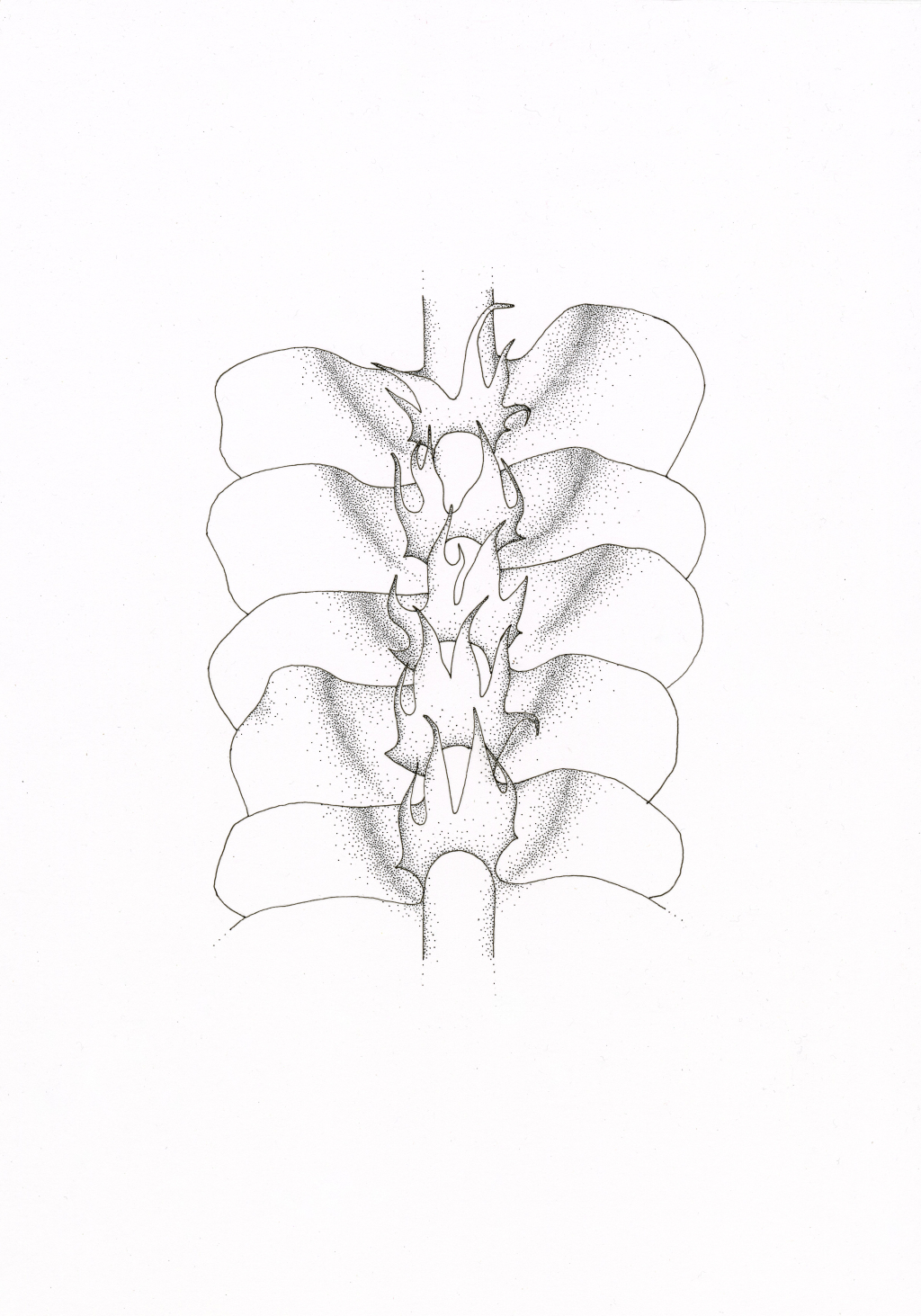Chiloscyphus
Terrestrial, lithophytic or epiphytic, dioicous or rarely autoicous or paroicous (not in Victoria). Asexual reproduction by caducous leaf lobes or by gemmae formed at shoot apices and on lateral leaf margins. Stems irregularly branched or rarely differentiated into prostrate microphyllous stolons that give rise to erect leafy secondary stems (not in Victoria); branches emerging from main stem near abaxial side of narrowed lateral leaf or rarely beside a narrowed underleaf (not in Victoria) and without a collar of tissue at its base, or emerging from main stem near lateral leaves or underleaves and with a collar of tissue at base. Lateral leaves orbicular, semicircular, ovate, obovate (not in Victoria) or oblong, entire, retuse, unlobed with multiple teeth along margins, deeply bilobed with or without teeth along margins, or rarely trilobed, alternate, rarely almost opposite (not in Victoria), convex, plane or concave, with transverse to succubous insertion, extending to the stem midline dorsally, rarely not extending to the stem midline dorsally and leaving a leaf-free strip of 1–9 cell rows between it and leaf on opposite side of stem, distant to imbricate, unistratose, rarely multistratose (not in Victoria). Underleaves usually smaller than lateral leaves, rarely approaching size of lateral leaves, longer than broad, orbicular to elliptic or obovate and entire or shallowly bifid, or with two main triangular entire or toothed lobes, with or without (not in Victoria) additional teeth or lobes on either side of underleaf, narrower or wider than stem, narrowly connate to both nearest lateral leaves, narrowly connate with lateral leaf with acroscopic margin closest to underleaf, free from other lateral leaf, or completely free from lateral leaves, distant to imbricate, plane, convex or concave when viewed from below. Leaf cells quadrate, rectangular, circular, elliptic or polygonal, smooth or with 1–several cell spine-like projections, thin- or firm-walled, with or without distinct trigones, with 1–15 oil bodies; oil bodies granular to coarsely botryoidal, globose, ovoid, ellipsoid or fusiform, colourless, greyish or brownish. Androecia on main stem or branches emerging from near lateral leaves or underleaves, rarely restricted to short branches lacking normal vegetative leaves (not in Victoria). Perianth on main stem or branches emerging from near lateral leaves or underleaves, never restricted to short branches lacking normal vegetative leaves, trigonous or rarely terete, obloid, ellipsoid or obovoid, divided into three lobes at apex; lobes bifid or undivided, entire, dentate or laciniate.
Around 220 species distributed throughout temperate to tropical regions of the world; nine species in Victoria.
Alternative circumscriptions for Chiloscyphus have been recently advocated based on relationships among Lophocoleaceae inferred from phylogenies of DNA sequences. Some groups that have been recognised at genus rank, such as Lophocolea Dumort., appear to form lineages placed within a larger lineage formed by species that have been assigned to Chiloscyphus, which necessitates the need to divide Chiloscyphus to maintain these genera (Söderström et al. 2013; Patzak et al. 2016). Following this approach, Chiloscyphus, is restricted to two northern temperate species with short inflated perianths that are borne on short leafless lateral branches, and the majority of Victorian species are placed in Lophocolea and one is placed in each of Pachyglossa and Clasmatocolea (Söderström et al. 2013, 2016). Alternatively, as is followed here, Chiloscyphus is more broadly defined to encompass a lineage that includes species previously placed within Clasmatocolea, Lophocolea and Pachyglossa. This approach seems more reasonable given that relationships in the broadly defined Chiloscyphus lineage is still poorly resolved (Patzak et al. 2016). Better resolution of relationships in this group requires a more comprehensive sample of species and Lophocoleaceae genera in phylogenies based on DNA sequences.
Patzak, S.D.F., Renner, M.A.M., Schäfer-Verwimp, A., Feldberg, K., Heslewood, M.M., Peralta, D.F., de Souza, A.M., Schneider, H. & Heinrichs, J. (2016). A phylogeny of Lophocoleaceae-Plagiochilaceae-Brevianthaceae and a revised classification of Plagiochilaceae. Organisms Diversity & Evolution 16: 481–495.
Söderström, L., Crandall-Stotler, B., Stotler, R.E., Váňa, J., Hagborg, A. & Von Konrat, M. (2013). Notes on early land plants today. 36. Generic treatment of Lophocoleaceae (Marchantiophyta). Phytotaxa 97: 36–43.
Söderström, L., Hagborg, A., von Konrat, M., Bartholomew-Began, S., Bell, D., Briscoe, L., Brown, E., Cargill, D.C., Costa, D.P., Crandall-Stotler, B.J., Cooper, E.D., Dauphin, G., Engel, J.J., Feldberg, K., Glenny, D., Gradstein, S.R., He, X., Heinrichs, J., Hentschel, J., Ilkiu-Borges, A.L., Katagiri, T., Konstantinova, N.A., Larraín, J., Long, D.G., Nebel, M., Pócs, T., Puche, F., Reiner-Drehwald, E., Renner, M.A.M., Sass-Gyarmati, A., Schäfer-Verwimp, A., Moragues, J.S., Stotler, R.E., Sukkharak, P., Thiers, B.M., Uribe, J., Váňa, J., Villarreal, J.C., Wigginton, M., Zhang, L. & Zhu, R. (2016). World checklist of hornworts and liverworts. Phytokeys 59: 1–828.
 Spinning
Spinning